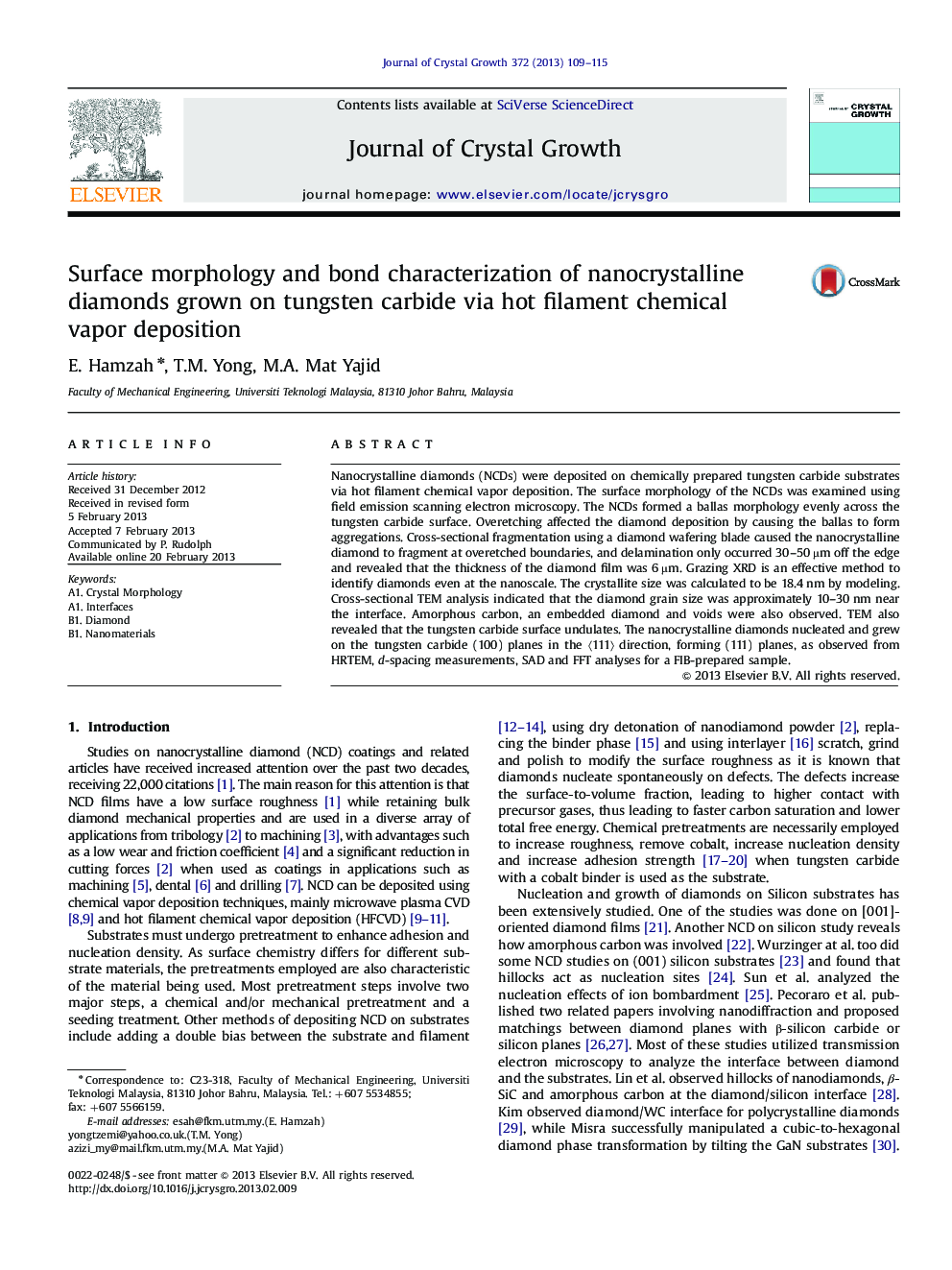| Article ID | Journal | Published Year | Pages | File Type |
|---|---|---|---|---|
| 1791007 | Journal of Crystal Growth | 2013 | 7 Pages |
•EDM sectioning causes NCD to exhibit a three-tier ballas morphology.•Failure at aggregation boundaries stops further delamination, i.e., results in good adhesion.•TEM examination revealed an embedded diamond in WC (Fig. 6).•Growth of diamond {111} planes on (100) WC planes were observed using TEM.•An 8-nm transition region of diamond/a-C/WC predicts the nucleation and anchoring area.
Nanocrystalline diamonds (NCDs) were deposited on chemically prepared tungsten carbide substrates via hot filament chemical vapor deposition. The surface morphology of the NCDs was examined using field emission scanning electron microscopy. The NCDs formed a ballas morphology evenly across the tungsten carbide surface. Overetching affected the diamond deposition by causing the ballas to form aggregations. Cross-sectional fragmentation using a diamond wafering blade caused the nanocrystalline diamond to fragment at overetched boundaries, and delamination only occurred 30–50 µm off the edge and revealed that the thickness of the diamond film was 6 µm. Grazing XRD is an effective method to identify diamonds even at the nanoscale. The crystallite size was calculated to be 18.4 nm by modeling. Cross-sectional TEM analysis indicated that the diamond grain size was approximately 10–30 nm near the interface. Amorphous carbon, an embedded diamond and voids were also observed. TEM also revealed that the tungsten carbide surface undulates. The nanocrystalline diamonds nucleated and grew on the tungsten carbide (100) planes in the 〈111〉 direction, forming (111) planes, as observed from HRTEM, d-spacing measurements, SAD and FFT analyses for a FIB-prepared sample.
